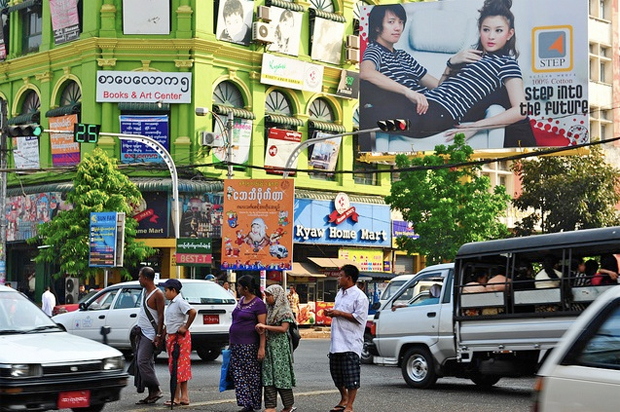"Sixty million people falling out of the sky - you're not going to see that again in our generation," quoted The Irrawaddy describing business opportunities in Myanmar.
Investors including carmakers have been rushing to tap those opportunities. Nissan and Mercedes-Benz are the latest global OEMs to join Suzuki, Mitsubishi, Toyota, Ford, GM, Kia and Hyundai, which began establishing a hold in the country by starting off selling spare parts and services.
So what is the potential of Myanmar's automotive market?
Going by registration numbers, there are slightly more than 300,000 passenger vehicles on the roads in Myanmar, which means there are around five passenger vehicles per 1,000 people. This number is understandably very low when compared to the current ratio of other ASEAN countries. Thailand, for example, has 84 passenger vehicles per 1,000 people. Myanmar's low level of vehicle penetration means there is a huge potential for future expansion. This is especially true when considering how things used to be in Thailand, when economic indicators were roughly the same.
While Myanmar has a per capita income on a Purchasing Power Parity basis (PPP) of around US$1,900 (Bt59,400), it is expected to increase to $3,000 by 2020. Thailand's population in the late 1980s was slightly below 60 million and its GDP (PPP) per capita was at just above $3,500. Even then, PV parc per 1,000 people in Thailand was at around 20, or four times the current figure in Myanmar. Therefore, nearly a million vehicles could potentially be added to the market in the coming years.
At the same time, long term economic reforms and improving incomes could drive demand gradually upward. In the short term there should be demand for replacement of the ageing fleet. Since the 1997 Asian financial crisis, the government has been running out of foreign reserves and had further limited the import of vehicles. As a result, buyers have struggled to replace their cars, and often have no choice but to continue using 10-year-old cars for another decade.
It was not until September 2011 that the government announced a replacement programme for owners of cars aged at least 40 years to be able to obtain import licences for cars made between 1995 and 2005. Up to July 2012, almost 60,000 passenger cars were scrapped and replaced. The government has subsequently encouraged owners of cars aged at least 20 years to import newer used cars, built in as late as 2007, with a reduction to the registration fee of around 50 per cent.
The average fleet is now being renewed. The relaxation of the import ban should also help unveil previously hidden demand. During the strict ban, the scarcity of supply had distorted prices, driving the local price of a 10-year-old car to as high as $100,000 (Bt3.1 million), or just as expensive as a brand new car in other markets. Prices were very much exaggerated and clearly reflected the highly suppressed demand. Right after the introduction of the substitution import programme in late 2011, demand rose significantly and prices fell sharply.
This could be observed in used-car exports from Japan, representing around 90 per cent of all passenger cars imported into Myanmar. In November 2011 alone there were more than 6,000 used-car imports, the same amount of imports which used to be seen in an entire year. The cheapest cars can now be found at less than a tenth of the cost of what they were prior to the introduction of the substitution import programme.
In May 2012, the government eventually began allowing individuals with a certain amount of foreign currency in government savings accounts to import cars, made in 2008 or later, without import licences. Consequentially, car demand expanded massively. Total exports of used cars from Japan to Myanmar in 2012 jumped by more than six times from the previous year to around 120,000. With a simple estimation, balancing out stock and small imports from other countries, this number should fairly depict the annual market size of Myanmar last year.
Clearly, all the above policies spell good news for the industry. However, as is the case in any new market, there may also be pitfalls. LMC Automotive is thus conducting a detailed study in Myanmar to help answer these key questions on building a business there: What is the size and potential of the market? Is the recent expansion sustainable? How will government policy impact the industry? What are the major risks?
Kon Thueanmunsaen is LMC Automotive's senior analyst for Asean.
|
















